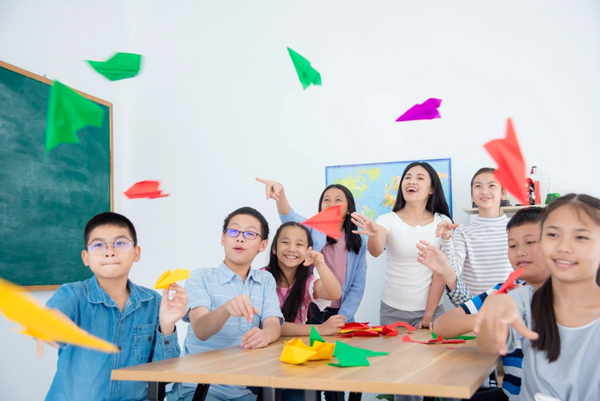Parenting Hacks (2): How to Nurture the Potential of Twice-exceptional Students? | Understanding Giftedness | HKAGE
After Identifying twice-exceptional students gifted students, how can parents and teachers nurture them to help unleash their potential?
Not only are the "twice-exceptional" characteristics of these students easily concealed during the identification process, but they can also significantly impact the effectiveness of diagnosing and providing support in their curriculum. Research has shown that the needs of these twice-exceptional students differ from those of typically gifted or special education students (Baum & Olenchak, 2002). Well-designed curricula can help them unleash their potentials while developing resilience to cope with their own challenges (Trail, 2011).

A learning environment that provides sufficient support and challenges
When the teaching content is close to a child's zone of proximal development, all children can learn more effectively (Vygotsky, 1978). If the learning content is too difficult, they can easily feel frustrated; if it is too easy, they may feel bored. Twice-exceptional students, like gifted children in general, need to continuously receive relevant academic challenges that involve higher-order thinking and problem-solving abilities.
A supportive learning environment for twice-exceptional students takes into account their strengths, weaknesses, and learning styles, encourages children to develop their strengths, and provides support to improve their weaknesses. Continuous assessment provides children with appropriately challenging instructional goals for their growth (Tomlinson, 1999). It is important for twice-exceptional students to focus on their strengths, intelligence, interests, and passions, rather than solely on difficulties and obstacles. When they experience the joy of success, they will have more confidence in their abilities.
Twice-exceptional students can also benefit from modifying the forms of classroom assessment. For example, visual-spatial learners prefer to express their artistic skills through drawing and labelling illustrations. For them, this form of assessment can better express what they have learned compared to the traditional written form of assessment. Other strategies such as extending test time, utilising information technology, and allowing alternative ways to replace formal assignments will help them demonstrate their knowledge and abilities (Bender, 2008).
Further Reading: Parenting Hacks (1): Understanding Twice-exceptional Students
Further Reading: Parenting Hacks (3): Cultivating Executive Functions in Twice-exceptional Students

7 strategies to help twice-exceptional students unleash their potential
In addition to creating a conducive learning environment for twice-exceptional gifted students, there are other strategies that can help them unleash their potential, including:
- Focusing on developing children's strengths.
- Encouraging the use of assistive devices, such as calculators and word processing software, to compensate for difficulties in spelling, writing, and calculations.
- Allowing children to showcase their talents in other ways, such as oral presentations, speeches, submitting videos or audios, using electronic reports, creating models, and performing in dramas.
- Using memory techniques to overcome short-term memory problems.
- Providing learning experiences that do not rely on paper, pen, or reading, such as puzzles, logic games, tangrams, and math manipulatives.
- Teaching children to recognise their own strengths and weaknesses.
- Providing mentorship from adults who are also twice-exceptional.

Supporting Different Cognitive Styles
Cognitive styles refer to individual differences in how children process information (Sternberg, Grigorenko & Zhang, 2008). By utilising their preferred cognitive styles, children can better receive and express information. Viewing individual differences as cognitive style differences allows us to recognise twice-exceptional students beyond the perspective of differences as flaws. In curriculum instruction and assessment, increasing teachers' sensitivity to individual differences can improve students' learning outcomes (Sternberg & Zhang, 2001).
1) Auditory or Visual Perception
Auditory learners prefer learning formats that involve lectures and discussions. In such formats, children can utilise their verbal expression skills to share and discuss ideas. Children with a strong preference for visual information enjoy learning modes that emphasise visual elements, such as charts, videos, images, and handouts. Visual learners are less inclined towards written notes and prefer detailed explanatory diagrams. They often struggle with easier tasks but excel in more challenging ones (Silverman, 2002).
2) Sequential or Conceptual Thinking
School curricula are primarily organised sequentially, which benefits children with a sequential thinking style. Additionally, children with sequential thinking styles are more likely to anticipate the consequences of actions (Silverman, 2002). Conceptual thinkers tend to perceive the bigger picture and the relationships between things before noticing details.
3) Strategies to Support Different Types of Learners
For Auditory Learners:
|
For Visual Learners:
|
For Sequential Thinkers:
|
For Conceptual Thinkers:
|
(Adapted from Trail, 2011)
Further Reading: Parenting Hacks (4): Importance of Home-School Collaboration to Twice-exceptional Students
Further Reading: Parenting Hacks (5): Twice-exceptional Students Can Succeed - Gifted Children with Autism






